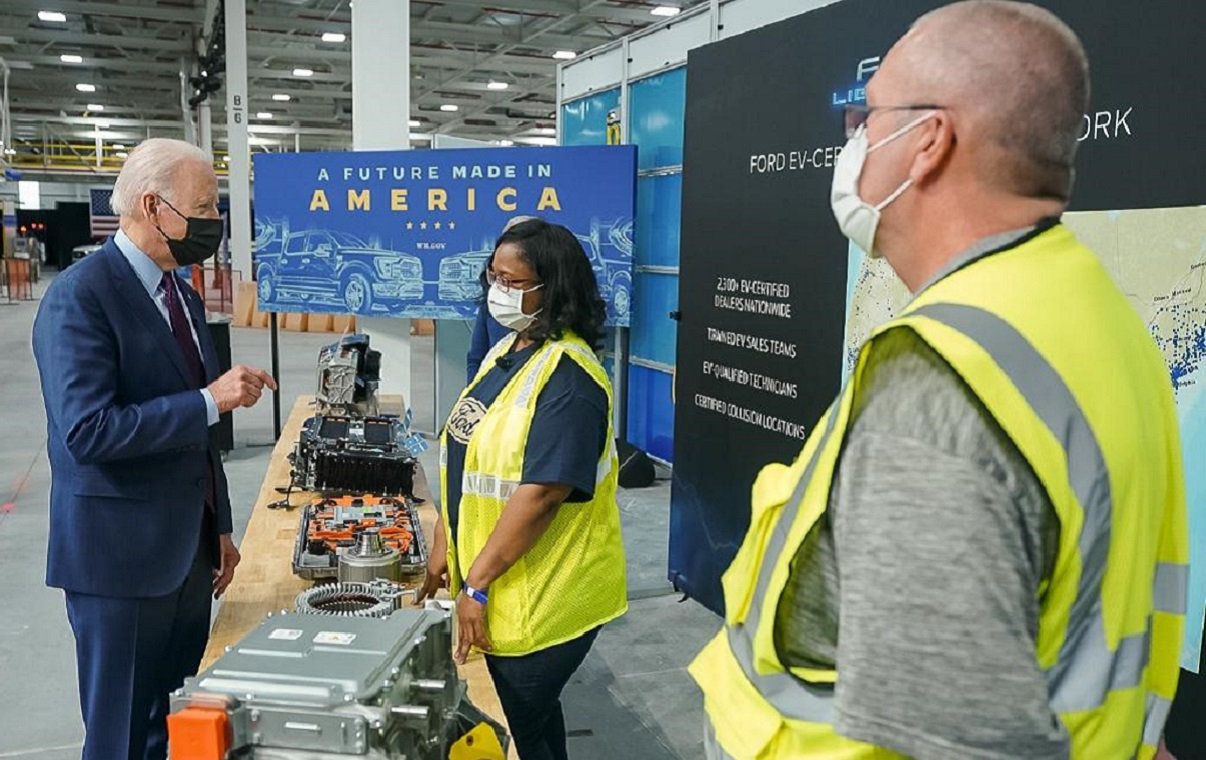Photo courtesy of the White House and licensed under CC BY-ND 3.0.
The Ford F-series pickups are iconic: “the undisputed heavyweight champion of American roads.” They’ve been the best-selling pickup in the US for almost 50 years.
The company itself lives equally large in the American imagination. Ford was instrumental in creating the mid-century compact between workers and employers. Thanks in large part to the might of their unions, factory workers were paid wages sufficient to vault them squarely into the post-war middle class.
That compact, which often excluded women and people of color, began to unravel in the 1980s and broke down almost entirely in the ’90s. As attacks on unions became commonplace, wages declined and working conditions deteriorated, leading directly to the hollowing-out of the middle class. Today, workers no longer receive a fair share of the profits they produce, making it a struggle to afford necessities like food, rent, and healthcare.
Ford holds an important place in our economy and our collective imagination. That's why it was such a big deal when the company unveiled last Wednesday a new all-electric version of its iconic truck, the F-150 Lightning, to be manufactured in Dearborn, Michigan, using union labor. President Biden even flew out to give a speech to celebrate the occasion.
As a quintessential American automaker, Ford’s investments in electric vehicles could spark a major shift in public perception. Transportation is responsible for the largest share of the US’s greenhouse gas emissions, and if we hope to avoid catastrophic warming, we need to ensure that every new car and truck sold in this country is an electric vehicle by 2035. Electric vehicles must become totally mainstream and accessible—and who better to make them seem like part of the American landscape than Ford?
Ford’s shift to electric vehicles also suggests that we may be on the brink of a new compact with American workers, catalyzed by federal investments in a clean energy economy and resurgent support for unions. Biden’s American Jobs Plan would create millions of good union jobs in the industries that will power a cleaner future, including the burgeoning electric vehicle sector. It also includes a plan to build a nationwide network of electric vehicle charging stations using union labor from the International Brotherhood of Electrical Workers.
Biden’s American Jobs Plan would not only create jobs: It would also put American workers in a stronger bargaining position. It calls for passing the Protecting the Right to Organize (PRO) Act, which would go a long way toward restoring fairness to the economy by strengthening American workers’ right to join and form unions and collectively bargain for high wages, good benefits, and safe working conditions. Further, it would require that every job created by a federal stimulus package offer healthy working conditions, protection from discrimination, and fair and equal pay. It’s no accident that Biden went to Dearborn, one of the most racially diverse cities in the US, to tout the plan. The Ford plant there is a powerful reminder that today people of color and women are leading union membership and organized labor.
As President Biden said during his speech in Dearborn, “We’re at a great inflection point in American history. How we handle the next four to 10 years is going to determine where we’re going to be 30, 40, 50 years from now.”
We have an opportunity to write a new story for American workers—one in which an inclusive economy works for everyday working people and helps create a clean energy future. Let’s urge Congress to take a major step toward that better future by passing the THRIVE Act, a big, bold vision for creating millions of good jobs that builds on the promising start offered by Biden’s American Jobs Plan.
